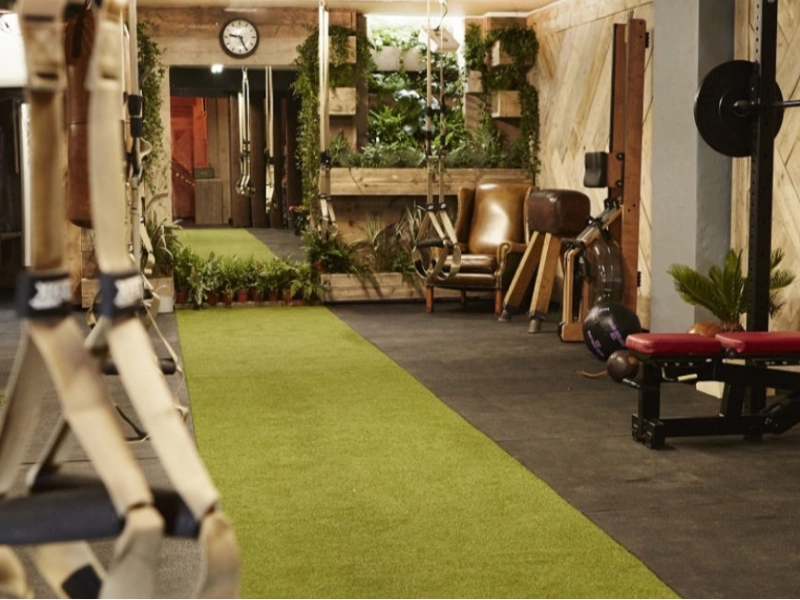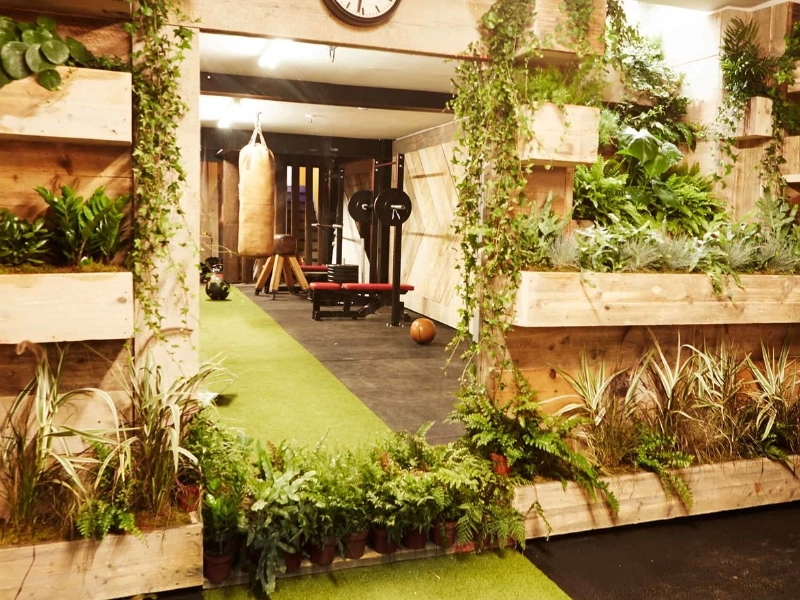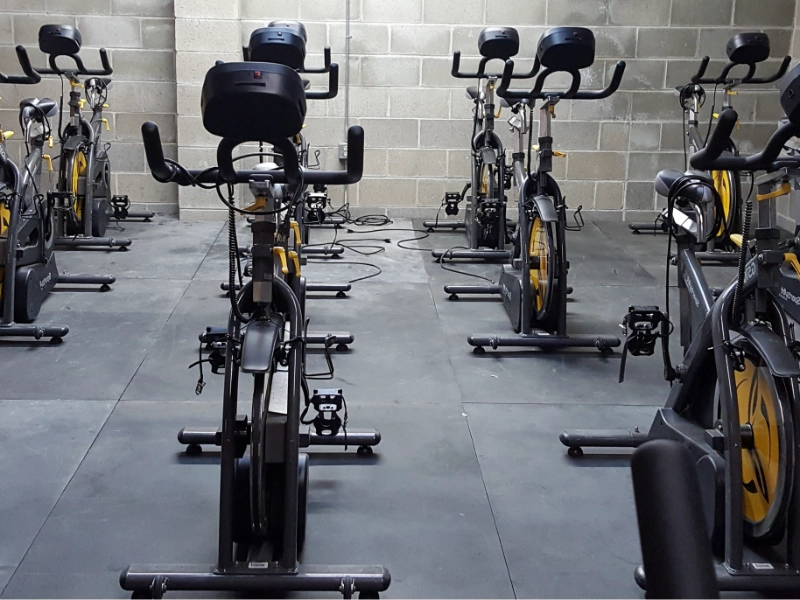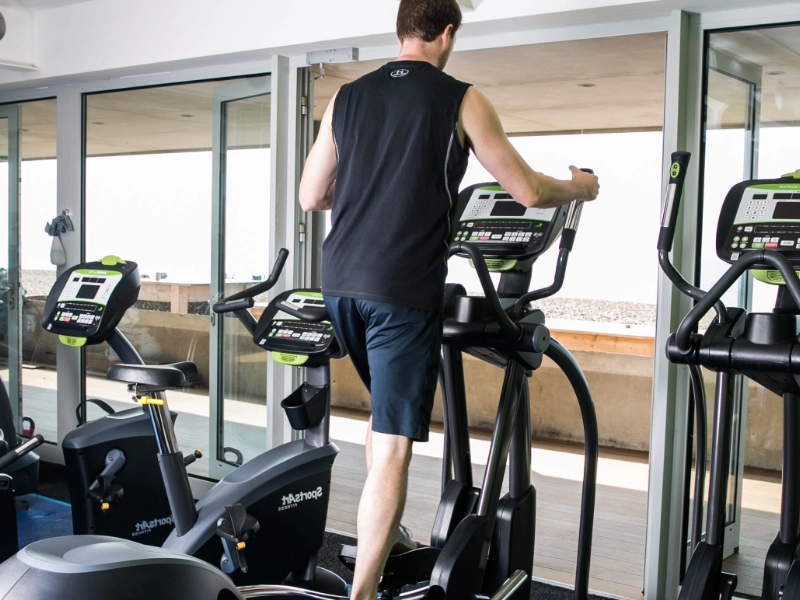Eco-Friendly Gyms: Sustainable Fitness Practices
Many gym members value sustainability and react favourably to buildings using green technologies. Among the several things you may do are recycle cans, plastics, and paper; provide reusable water bottles; use non-toxic cleaning products; and set solar panels. Energy-efficient HVAC systems and lighting; and including low-flow faucets, toilets, and showerheads to help with water conservation are other ecologically friendly aspects.
Equipment

Building Materials
 Using paperless check-in and membership registration systems, for instance, will help your gym greatly cut waste produced. Changing to electronic billing techniques might also help you cut postage and printing costs.
Using energy-efficient lighting—LED bulbs, for example—that generates less heat and uses less power is another great tactic. These kind of lighting can greatly cut your cooling expenses and reduce your electricity use.
By producing your own clean energy, adding solar panels on the roof of your building will also significantly reduce your carbon footprint. Another crucial aspect is including a water-saving plan using low-flow toilet, faucets, and showerheads to cut water usage.
At last, enabling your members to live greener depends on starting a recycling programme at your company. Make sure your gym has well marked recycling containers and provides instructional tools on environmentally friendly living. Another easy approach to be green is to choose exercise clothes composed of environmentally friendly materials like recycled polyester or bamboo.
Using paperless check-in and membership registration systems, for instance, will help your gym greatly cut waste produced. Changing to electronic billing techniques might also help you cut postage and printing costs.
Using energy-efficient lighting—LED bulbs, for example—that generates less heat and uses less power is another great tactic. These kind of lighting can greatly cut your cooling expenses and reduce your electricity use.
By producing your own clean energy, adding solar panels on the roof of your building will also significantly reduce your carbon footprint. Another crucial aspect is including a water-saving plan using low-flow toilet, faucets, and showerheads to cut water usage.
At last, enabling your members to live greener depends on starting a recycling programme at your company. Make sure your gym has well marked recycling containers and provides instructional tools on environmentally friendly living. Another easy approach to be green is to choose exercise clothes composed of environmentally friendly materials like recycled polyester or bamboo.
Lighting
 Gyms, being exercise facilities, utilise energy-efficient lighting to help to save natural resources and lower running costs of electricity. To reduce their environmental impact, several institutions also make use of alternate energy sources such solar and wind power.
Using biophilic components—which bring natural elements indoors and hence support gym members' health and well-being—is an emerging trend in environmentally friendly design. These elements might include natural or recycled lighting, bamboo and cork as sustainable flooring materials, and vegetation to help to enhance air quality.
Using nontoxic cleaning products like microfiber cloths and mops and low-flow showerheads and insulating hot water pipes help to save water. Last but not least, one simple approach to make your gym more environmentally friendly is urging members to utilise reusable water bottles and offer well labelled recycling containers. Encouragement of green mobility by means of bike racks and carpooling choices can also help to enhance environmental initiatives. Furthermore, taking part in local environmental activities is a fantastic opportunity to highlight the sustainability dedication of your gym and draw environmentally minded people.
Gyms, being exercise facilities, utilise energy-efficient lighting to help to save natural resources and lower running costs of electricity. To reduce their environmental impact, several institutions also make use of alternate energy sources such solar and wind power.
Using biophilic components—which bring natural elements indoors and hence support gym members' health and well-being—is an emerging trend in environmentally friendly design. These elements might include natural or recycled lighting, bamboo and cork as sustainable flooring materials, and vegetation to help to enhance air quality.
Using nontoxic cleaning products like microfiber cloths and mops and low-flow showerheads and insulating hot water pipes help to save water. Last but not least, one simple approach to make your gym more environmentally friendly is urging members to utilise reusable water bottles and offer well labelled recycling containers. Encouragement of green mobility by means of bike racks and carpooling choices can also help to enhance environmental initiatives. Furthermore, taking part in local environmental activities is a fantastic opportunity to highlight the sustainability dedication of your gym and draw environmentally minded people.
Cleaning
 Using non-toxic, environmentally friendly cleaning products generated from renewable resources helps to lessen influence on the surroundings. These cleansers also guarantee correct cleaning of equipment, therefore reducing the possibility of releasing possibly dangerous substances into the water or air systems.
Two good ways to help reduce carbon footprints and electricity expenses are using energy-efficient lighting and recycled material-made insulation. By installing solar panels, the gym's reliance on conventional energy sources will be even less.
Provide properly labelled, strategically placed recycle containers and include these ideas into new member introduction and staff training to support waste reduction projects. Low-flow toilets and faucets in restrooms as well as reusable water bottles help to increase energy economy even more.
Engaging members on the sustainability projects of the gym both personally and online will raise interest, improve retention rates, and draw in new members that give environmental responsibility first priority. Share tales of how the gym's green initiatives are helping, including statistics on how much plastic or electricity has been saved and quotes from members attesting to their own success in supporting the gym's environmental goals.
Using non-toxic, environmentally friendly cleaning products generated from renewable resources helps to lessen influence on the surroundings. These cleansers also guarantee correct cleaning of equipment, therefore reducing the possibility of releasing possibly dangerous substances into the water or air systems.
Two good ways to help reduce carbon footprints and electricity expenses are using energy-efficient lighting and recycled material-made insulation. By installing solar panels, the gym's reliance on conventional energy sources will be even less.
Provide properly labelled, strategically placed recycle containers and include these ideas into new member introduction and staff training to support waste reduction projects. Low-flow toilets and faucets in restrooms as well as reusable water bottles help to increase energy economy even more.
Engaging members on the sustainability projects of the gym both personally and online will raise interest, improve retention rates, and draw in new members that give environmental responsibility first priority. Share tales of how the gym's green initiatives are helping, including statistics on how much plastic or electricity has been saved and quotes from members attesting to their own success in supporting the gym's environmental goals.








